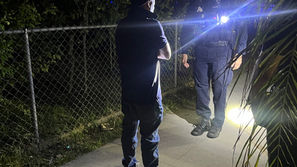Henry Miller kept his eye on Jack Schmitz
- Bill Coate
- Aug 20, 2022
- 4 min read

For The Madera Tribune
Jack Schmitz was one of many Madera County pioneers who got their start in agriculture by working on the Miller & Lux ranches in the last quarter of the 19th century.
A million acres of land with a million head of cattle — that’s what constituted a major portion of the estate of cattle baron, Henry Miller. It drew thousands of immigrants to his California fiefdom. Among these were scores of Italians and Germans who would figure heavily in early Madera County history. Numerous families on the contemporary scene in Madera can point to the Miller & Lux operation as the place where their ancestors began their quest for the American dream. The descendants of John Walter Schmitz I are among these.
Schmitz obtained employment on the Miller and Lux ranches in April of 1871. He had just turned 25, and after a number of forays into the mines of Montana and California and a stint as a bridge builder for the old San Francisco and San Jose Railroad Company, he nailed down a job as a fence builder for Henry Miller on the Santa Rita Ranch.
Schmitz quickly gained the reputation of industriousness and soon was promoted to the canal building crew. One day, as Schmitz and his fellow workers were constructing a canal gate, a colleague, in attempting to drive a spike, bent it to the point where it was unusable. The man, in his haste, simply threw the bent spike on the ground, picked up a new one, and proceeded with his work. Schmitz, almost without thinking, simply walked over to the discarded spike, picked it up, straightened it with his hammer, and returned it to the spike box.
Now it just so happened that Henry Miller was watching all of this, and he quickly made a decision. This young German lad had promise, so much so that Miller made him foreman of the canal crew and later superintendent of the entire Santa Rita operation.
For years, Schmitz labored for Miller & Lux, tending to their interests in the San Joaquin valley as if they were his own. His visits with Henry Miller were frequent, and even more frequent was the correspondence that he received from his boss.
Henry Miller was a prolific letter writer. He always carried with him a pad of small sheets of cheap letter paper. When on the road he would write letters for hours before anyone else was up. At the office he dictated letters by the hour.
The minutest directions were given as to the class of stock to be used and where to pasture, graze, water, ship, or feed them. Employees were told when to buy and when to sell, and Miller instructed his foreman on how to keep the fences, kill the rabbits, remove dead trees, and burn cockleburs and tumbleweeds.
Schmitz was told how to feed the men, house them, and keep them contented — how to treat tramps, neighbors, and visitors — how to deal with the public, the press, and dignitaries. J.W. Schmitz saved his Henry Miller correspondence, and much of it is preserved today in the care of the family.
At times Miller seemed caught up in the minutiae of the operation. In one letter, Miller wrote, “You should have some cats to destroy the mice in the granary.” The next day he announced, “I have directed that two cats be sent you for the granary.” The following day he wrote, “Have the cats arrived for the granary?” The next day he instructed, “Do not let the cats get food around the kitchen or they will catch no mice.” This was followed the next day by the inquiry, “Are the cats catching the mice in the granary?”
It is easy to see how one might conclude that the mice in the granary were the most important things on the mind of Henry Miller. Very quickly it was reported that the mice were all destroyed, whereupon a missive by return mail announced that both cats were no longer needed, one was being sent to another ranch.
As regards ranch hands and their wives, Miller was just as involved. “If you have a mechanic,” he wrote, “whose wife does not expect to do any work and is only a boarder, I do not want her to cause any trouble or extra work for the cook. She should have no business in the kitchen or storeroom. When a man is unfortunate enough to have a bad wife, she is likely to cause trouble.
J.W. Schmitz served Henry Miller well. He took his written instructions seriously and carried them out to the letter. All through the correspondence runs a thread of trust and faith in Schmitz. The two men seem to have been of one mind. Frequently Miller asked in his letters for an opinion on a new step or on the character of a certain person, and he indicated that Schmitz’ reply would be helpful to him.
In time, J.W. Schmitz left the employ of Miller & Lux and bought the Chapman ranch which was located roughly in the vicinity of the old Alpha School. On July 25, 1910, he passed away at the age of 64. He had come a long way from fence builder to superintendent to rancher. Much of that success was no doubt due to his no-nonsense approach to life and the precision with which he approached his work. Certainly these were the qualities that Henry Miller admired, and these were the qualities that made Schmitz the right hand man of California’s cattle king. They are also qualities that later generations of Maderans recognized in Schmitz’ descendants as they made their own contributions to Madera County.
























Comments